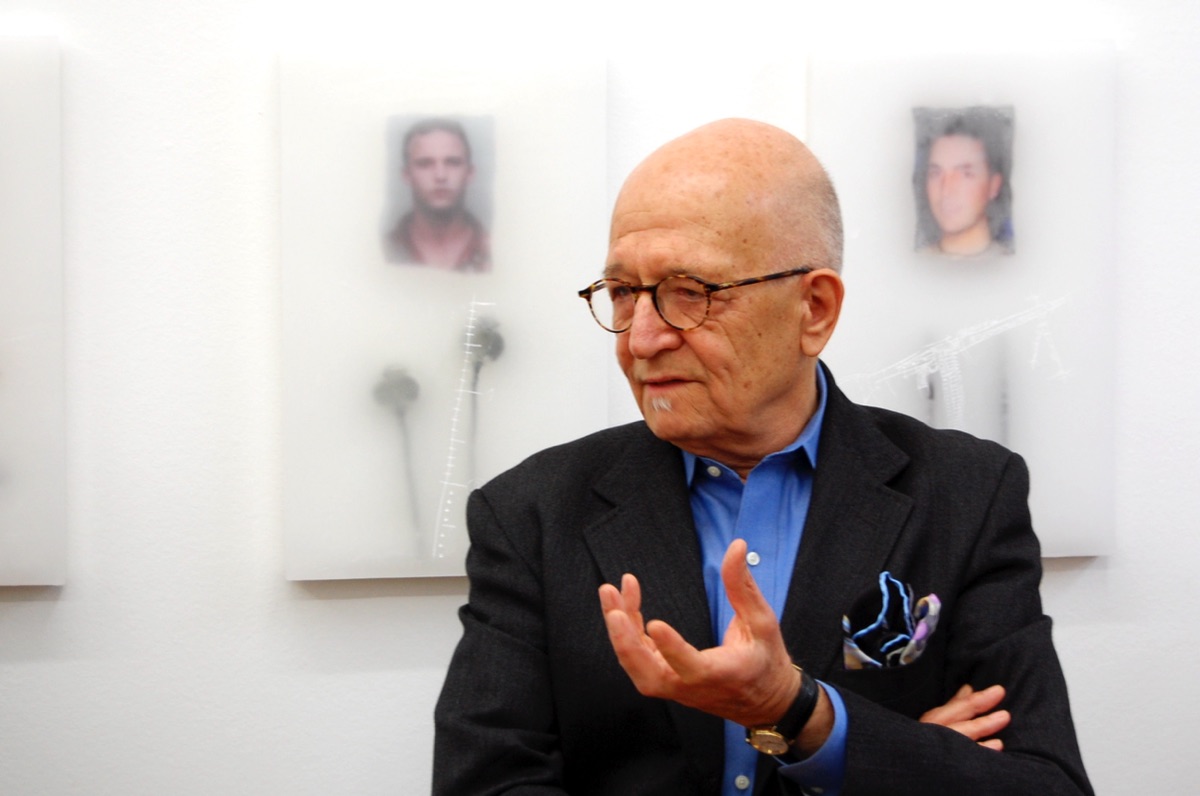ULRICH HAUG REAKTIONEN
CRITIC´S PICK // ARTNEWS // MAY 2011
The ancient tradition of employing wax as a fine-arts material finds eloquent articulation in the works of 38-year-old German artist Ulrich Haug. From Fayum mummy portraits to Renaissance bozzetti, from lifelike busts by Medardo Rosso to encaustic paintings by Jasper Johns, Haug’s work reveals the continuing versatility and expressivity of the mate- rial itself. Fragile yet durable, responsive to the touch, warm and fleshlike, wax offers the artist an astonishing range of formal possibilities. Haug has combined it with concrete and iron, as well as with wood and lead; he has tinted it, molded it, and embedded objects into its surface. At Kunsthaus Fischer in Stuttgart, his 5-by-5-inch works sell for $277, while those measuring 63 by 79 inches are priced at $3,875.
Prof. David Galloway ist Kurator und Kunstkritiker. Unter anderem arbeitet er für den „International Herald Tribune und ist Korrespondent für „art news“. Von 1977 - 78 leitete er das Museum of Contemporary Art in Teheran.
It was in 1998, after he’d completed his studies in fine arts and special education in Ludwigsburg and Tübingen, that Haug began exploring wax as “a way of bringing multiple levels of a picture together.” At the time, he was using a variety of graphic media in his abstract compositions, but he sought to also incorporate found objects, so as to add depth to his work. Wax seemed to offer a solution—candle wax, bleached and unbleached beeswax, industrial paraffin. Today the artist can control the action and interaction of his materials to create intricate, relief-like structures. He recently devised a way of “burying” texts and photos in wax while allowing specific fragments and extracts to remain legible.
Many of Haug’s latest works have been inspired by visits to Provence. In response to the wildfires of 2003, he began incorporating fragments of burned wood into his compositions. Then, at a flea market, he chanced upon a metal figure of Christ broken off its cross. He created a mold, made multiple casts of the figure, and then sank them into a molten bed of wax, leaving some of them invisible, while others stand out in sharp relief. Although denying that the works deal explicitly with religion, Haug nonethe- less concedes, “All my work is concerned with aspects of spirituality.” This includes a recent series about how fate—biological and social—affects individual destiny. Here his subjects included a murderer, an AIDS patient, and a young man with Down syndrome. In one of his most extensive series, Haug explored the life and work of American expatri- ate artist Douglas Johnson, who died in Provence more than a decade ago.
By chance Haug encountered slides that Johnson had made as studies for his work, along with photos of himself as a young man. “I was drawn to them like a magnet,” Haug comments. Inspired by Johnson, Haug’s faces and figures seem to vanish beneath depths of wax and tar, or rise up- ward to confront the viewer directly. It is precisely this dialectic between concealing and re- vealing that lends Haug’s work its drama and authenticity.
Many of Haug’s latest works have been inspired by visits to Provence. In response to the wildfires of 2003, he began incorporating fragments of burned wood into his compositions. Then, at a flea market, he chanced upon a metal figure of Christ broken off its cross. He created a mold, made multiple casts of the figure, and then sank them into a molten bed of wax, leaving some of them invisible, while others stand out in sharp relief. Although denying that the works deal explicitly with religion, Haug nonethe- less concedes, “All my work is concerned with aspects of spirituality.” This includes a recent series about how fate—biological and social—affects individual destiny. Here his subjects included a murderer, an AIDS patient, and a young man with Down syndrome. In one of his most extensive series, Haug explored the life and work of American expatri- ate artist Douglas Johnson, who died in Provence more than a decade ago.
By chance Haug encountered slides that Johnson had made as studies for his work, along with photos of himself as a young man. “I was drawn to them like a magnet,” Haug comments. Inspired by Johnson, Haug’s faces and figures seem to vanish beneath depths of wax and tar, or rise up- ward to confront the viewer directly. It is precisely this dialectic between concealing and re- vealing that lends Haug’s work its drama and authenticity.
